#Mogwai's short comics
Photo
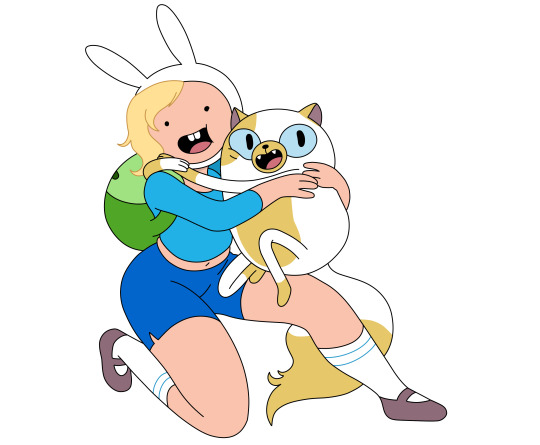
standee design by writer/storyboard artist Hanna K. Nyström
design cleanup by color supervisor Carolyn Ramirez
ADVENTURE TIME at SAN DIEGO COMIC-CON 2023!
———
WARNER BROS. TELEVISION SCREENINGS
WEDNESDAY, JULY 19th at 6:00pm – 9:30pm
Ballroom 20
Comic-Con and Warner Bros. Television proudly continue our annual Preview Night tradition featuring the world premiere of the highly anticipated series Adventure Time: Fionna and Cake, alongside all-new episodes of Riverdale and Teen Titans Go!, and screenings of Mrs. Davis and Superpowered: The DC Story.
———
MAX ORIGINAL ANIMATION
THURSDAY, JULY 20th at 11:00am – 12:30pm
Ballroom 20
Max Original Animation celebrates new and returning animated series' including an expansion in the Adventure Time universe, Adventure Time: Fionna & Cake; a new animated series, Young Love, based on the characters from Matthew A. Cherry and Sony Pictures Animation’s Oscar-winning animated short, Hair Love; and a preview of the upcoming fourth season for the fan-favorite Harley Quinn. The panel will feature exclusive sneak peeks, surprise panelists, and more. Moderated by Damian Holbrook (TV Guide magazine).
———
SUPERSONIC: The 15th Annual Behind-The-Music Panel
THURSDAY, JULY 20th at 10:00am – 11:00am
Room 25ABC
Get a behind-the-scenes look at what goes into creating the scores and sounds to some of today's most popular TV series and films. Panelists include Phil McGowan (score mixer, Star Trek: Picard), Amanda Jones (composer, American Horror Stories, ADVENTURE TIME: FIONNA & CAKE), Chris Bacon (composer, Wednesday), Sherri Chung (composer, Gremlins: Secrets of the Mogwai), Kurt Farquhar (composer, The Proud Family: Louder and Prouder), and Michael Yezerski (composer, Cabinet of Curiosities).
———
#Adventure Time#adventure time: fionna & cake#comiccon#Amanda Jones#Hanna K Nyström#Carolyn Ramirez#sdcc#sdcc2023
1K notes
·
View notes
Photo
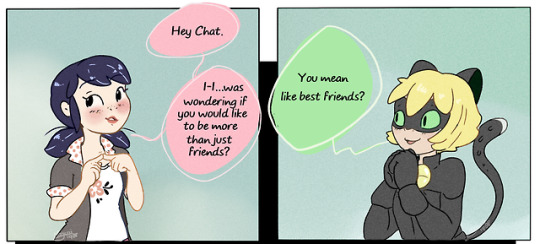
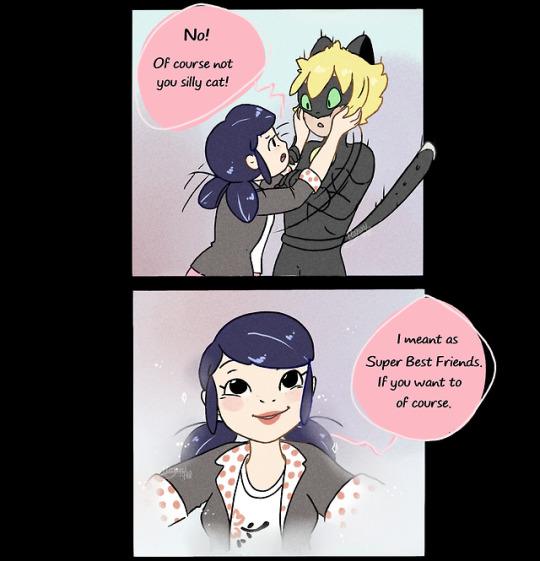
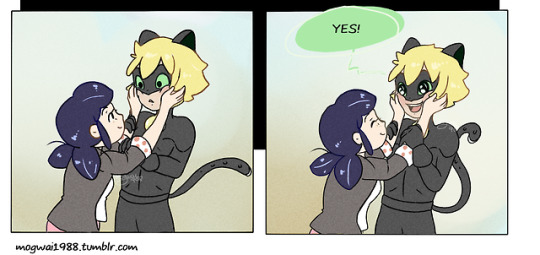
#marichat#miraculous ladybug#Mogwai's short comics#mogwai's doodles#mogwai's art#there was an attempt at comedy#and an attempt in general#I can't believe this shit took me two weeks to finsh#unacceptable
4K notes
·
View notes
Text
The Widow's best of 2021
Compiled by Liz Arratoon
2021 was the year Blackpool Pleasure Beach celebrated its 125th anniversary, and the magic world marked 100 years of sawing a woman in two. Hmmm! For us, spending more time at home meant we watched more films and read more books so both will feature more heavily in our list than usual, along with other stuff we’ve seen and enjoyed this year.
But before we get to any of that let’s start with the most beautiful thing we saw in 2021. It was right at the start of year – and nothing since has come close to it – when the London International Mime Festival directors Joseph Seelig and Helen Lannaghan managed to put on a brilliant event against the odds by going online.
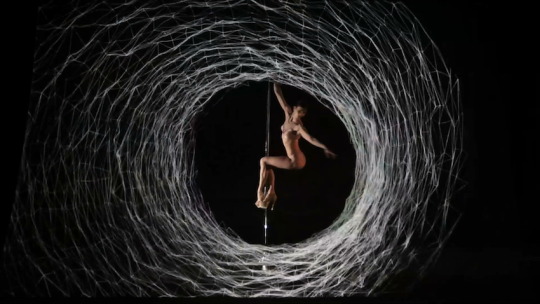
MOST CREATIVE: Vertigo, a short film by mixed-reality artists Kristin and Davy McGuire of Studio McGuire commissioned by the London International Mime Festival. Four minutes of heaven as Kristin performs on a shiny pole, enveloped in a gossamer haze of digital images that are protected on to gauze. Stunning! Watch it here. Pic: Studio McGuire
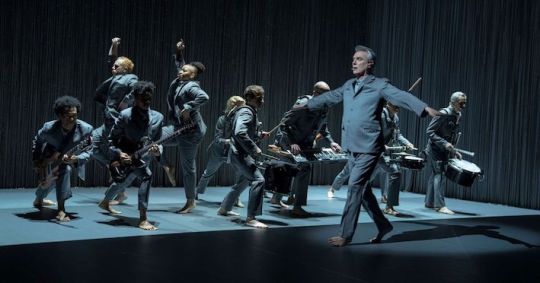
BEST SHOW: David Byrne’s innovative concert/dance production American Utopia.
BEST CHOREOGRAPHY: Annie-B Parson’s thrilling moves in American Utopia.
FAVOURITE ACT: The Shandong Acrobatic Troupe’s plate spinners from 2019’s Monte Carlo International Circus Festival. In a refreshing break from tradition, it used the main theme music from Wong Kar-wai’s 2004 film 2046. Also watch out for Laura Borrelli's hula-hoop cameo in the film The Hand of God.
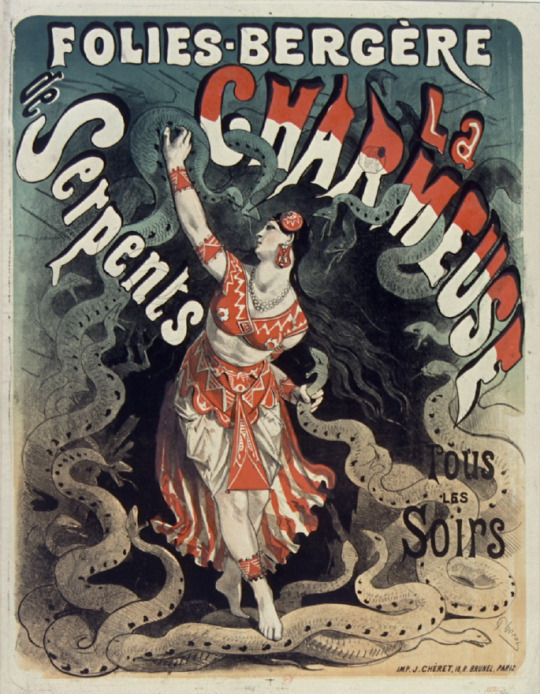
BEST TWITTER CIRCUS PIC: La Charmeuse de Serpents at the Folies-Bergère, posted by @PablosCircus.
BEST PROMO: Hula-hoop star Marawa the Amazing's delightful 'calling card', produced by her husband. Watch it here.
BEST SHOWBIZ STORY: Christine Walevska's stolen cello in The Tale of the Little Countess’ Little Cello on BBC Radio 4’s Outlook.
BEST SHOWBIZ TV SERIES: Hacks, with the incredible Jean Smart as a 'senior' Vegas stand-up comic.
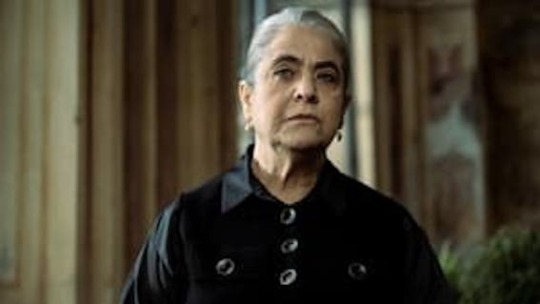
BEST TV CHARACTER: Nunzia Schiano as Donna Nunzia in Gomorrah, the Naples-set Mafia saga, which also gets MOST STYLISH TV SERIES for its breathtaking lighting and locations.
BEST DOCUMENTARY SERIES: Fran Lebowitz’s Pretend It’s a City, directed by Martin Scorsese on Netflix.
BEST INTERVIEW: Sylvie Guillem by dancer Daniil Simkin. Watch it here.
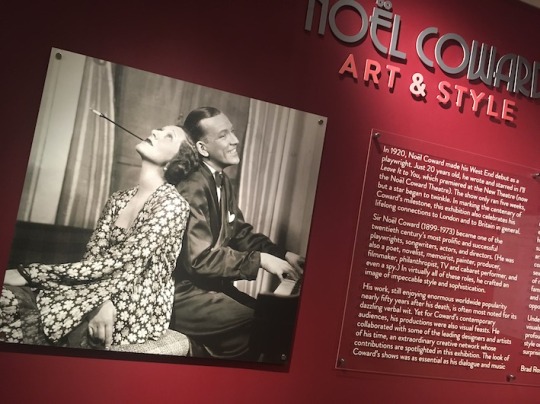
BEST EXHIBITION: Noël Coward Art and Style at the Guildhall Art Gallery in London.
BEST SERIES: Spending the War Without You: Virtual Backgrounds. Laurie Anderson’s stunningly intelligent Norton ‘lectures’ – in reality, shows – from the Mahindra Humanities Center, six of them given to the world for free!
BEST MUSIC: The score for the TV series ZeroZeroZero by Mogwai.
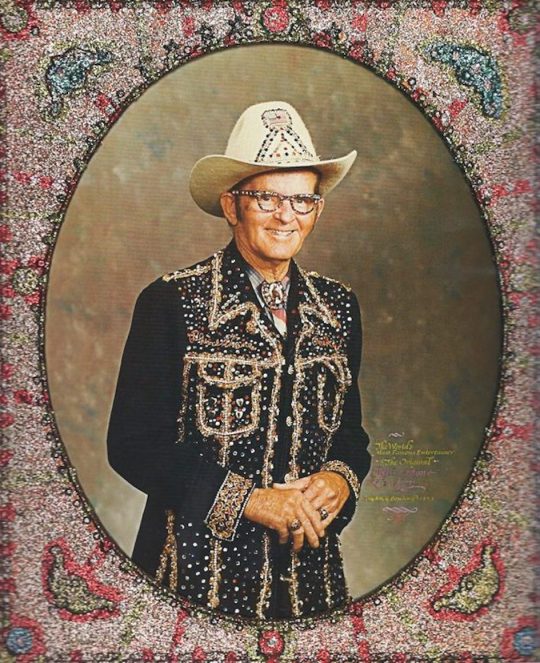
BEST WEEKLY MAILOUT: David Mills’ Quality Time – “a five-point bulletin of curated curious content” – in which he scours the world for things to interest, surprise and delight us. Above is the original rhinestone cowboy Loy Bowlin, who covered his life and house, the Beautiful Holy Jewel Home, in glitter, tin foil, tinsel and so forth. What could be more showbiz? Subscribe for free here.
BEST DANCE: The Ballets de Monte-Carlo White Darkness by Nacho Duato and The Lavender Follies by Joseph Hernandez.

BEST COSTUMES: Russian synchronised swimmers Svetlana Kolesnichenko and Svetlana Romashina’s spider-themed outfits at the Olympic Games.
BEST FILM: Apples, a Greek Weird Wave first feature film from director Christos Nikou concerning… um… a different sort of pandemic.
BEST ANIMATION: Hungarian 1976 short Scenes with Beans, directed by Ottó Foky, about a cosmic metallic hen that lands on a planet of beans and observes their daily lives.

BEST DESERT ISLAND DISCS CASTAWAY: Sophia Loren, by a mile.
MOST FUN: Stump the Guesser, a short film by Guy Maddin, Evan Johnson and Galen Johnson.
BEST SHOWBIZ BOOK: My Rock ’n’ Roll Friend by Tracey Thorn, and To the End of the World, Travels with Oscar Wilde by Rupert Everett.
BEST BOOK: Two more memoirs share this spot… Farewell to Gabo and Mercedes by Rodrigo García, and Linn Ullman’s Unquiet. Both concern ageing and death, which leads us on to…
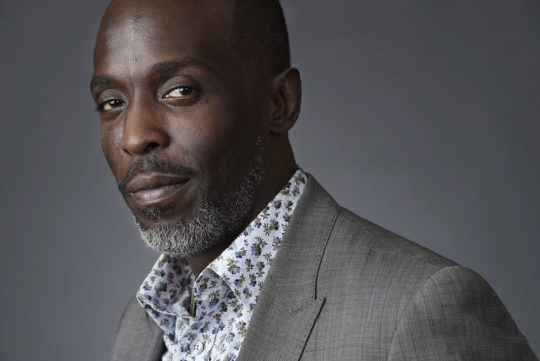
GONE TOO SOON: Mary Wilson of the Supremes, Mike Nesmith of the Monkees and actors Michael K Williams (above) and Helen McCrory. And those we knew personally: our friend circus impresario Gerry Cottle, Spymonkey’s marvellous and unforgettable loon Stephan Kreiss (below), and lastly Lord Christopher Laverty of the magnificent @clothesonfilm, who was one of the most knowledgeable, and certainly the best, speakers we’ve ever had the pleasure of listening to, who died desperately young in a canoeing accident.

But so as not to end on too sad a note SPECIAL MENTIONS go to the Lucille Ball film Being the Ricardos, the kick-ass women in the TV series The Nevers, and the simply spectacular documentary House of Cardin, about genius fashion designer – among many, many other things – Pierre Cardin.
#Studio McGuire#Davy and Kristin McGuire#London international Mime Festival#david byrne#american utopia#annie-b parsons#bbc radio 4#gommorah#laurie anderson#noel coward#sylvie guillem#david mills#quality time#ballets de monte-carlo#mogwai#sophia loren#desert island discs#guy maddin#stump the guesser#Ottó Foky#gerry cottle#stephan kreiss#Lord Christopher Laverty#Clothes on Film#lucille ball#pierre cardin#rupert everett#tracey thorn#marawa the amazing
2 notes
·
View notes
Text
10 Things From Gremlins That Haven't Aged Well | ScreenRant
Part horror flick, part comedy, part holiday film, Gremlins is one of those movies that has a little something for everyone. The Spielberg-produced 80s classic was a hit when it debuted, securing itself a placement as one of the highest-grossing blockbusters of 1984, behind such franchise giants as Indiana Jones and the Temple of Doom and Ghostbusters. It followed the Pletzer family of Kingston Falls who, after inviting a mysterious creature into their household, are forced to confront the ramifications of their purchase when it multiples into dozens of demons.
Audiences couldn't get enough of the gross-out humor and revolting shenanigans of the gremlins, the creature effects, or the over the top nature of the holiday farce. As entertaining as the film is, there are aspects of it that are dated to audiences today. Some of the gremlin effects are painfully hokey, some of the fashion screams 80s, and who gets excited about cable today? Here are 10 things about Gremlins that haven't aged well.
RELATED: 10 Things From Back To The Future That Haven't Aged Well
10 Cable Being A Big Deal

Gremlins takes place in smalltown, USA, so Billy Peltzer having a Mogwai is probably the most exciting thing since... cable? The film takes place in the '80s, so, having cable was something of a big deal because, otherwise, everyone gathered around their television for a few channels and some static.
Judge Reinhold plays some smarmy VP at Billy's bank, giving him an unending mountain of verbal abuse and trying to get Phoebe Cates to go out with him instead of poor Billy. So, what does he use to ingratiate himself to Ms. Cates? The fact that he has cable now.
9 The Gremlins

After Billy and his brother Pete (Cory Feldman) accidentally get his Mogwai wet, they discover what the old man at the oddities store cautioned about it; one Gremlin turns into five Gremlins, with the mean-spirited Stripe as their defacto ring leader.
As adorable as the Gremlins are, and as good as the puppeteering of them was for the day, they still look more like adorable Furby toys than actual terrifying supernatural creatures. Even later on, the jerky stop motion and lizard-like appearances don't help make them any more lethal.
RELATED: 10 Best Movie Aliens, Ranked
8 The Bathroom Buddy

Mr. Peltzer is something of a mad scientist/Doc Brown inventor in his workshop, conceiving of all sorts of strange and unusual gadgets that he tries to impress his family with. He develops the Bathroom Buddy, the Swiss Army Knife of toiletries, to "revolutionize" travel and save consumers hours on grooming.
The fact that the gadget is as big as a person's toiletry bag already is the least of its problems. Its made from gaudy plastic and looks like a cross between a pager and a child's toy. Even for the 80s, no discerning traveler would buy this monstrosity.
7 Hill Valley
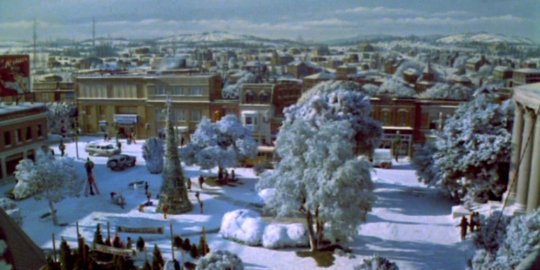
The town where the film takes place, Kingston Falls, is something out of the Andy Griffith Show. It's corny and quaint, and, while it services well for a Christmas story, with its single post office, drug store, and bank, it's the same sort of set used for dozens of 80s films.
If it looks familiar, it's because from the clock tower on down, it's the same set for another quaint town: Hill Valley from the Back to the Future films. It's even populated by all the same stereotypes: the miserly Mrs. Beagle who hates Christmas, the selfish bank manager, etc.
6 The Fashion

From Billy's tweed blazer he wears at the bank (is he 17 or 65?), to Kate's ruffled neo-Victorian blouse and clip-in plastic barrettes, 80s fashion is everywhere. And, because Steven Spielberg watched a lot of It's A Wonderful Life before making this Christmas classic, lots of characters look like they stepped out of the 1940s.
The anachronistic and vintage fashion of that time period was alive and well in the 80s, so it wouldn't be uncommon for Mrs. Beagle to wear pillbox hats or Jack at the bank to wear an obnoxious fur-lined overcoat. It doesn't have the same charm today.
5 The Gremlins Hatching

It's a strange occurrence watching what look like dryer balls exploding out of Gizmo's back, grow into melon-sized furballs, and unfurl like daisies in the sun. The process may have been incredible for its time, but now the methods of making the movie magic are too transparent.
Audiences today are very aware of the fact that the Gremlins are puppets and animatronic components. They can only move in certain positions, have very simple ranges of motion, and often don't look any different than the dolls created for the film's release—which was probably intentional.
RELATED: 10 Horror Movie Monsters That Scared You as Children
4 Mr. Futterman

The racist, chauvinistic neighbor of Billy's hates foreign cars, hates anything un-American, and likes to shamelessly hit on young women at the bar. While there are sleeze-balls like him everywhere, the film gives him a particularly wide berth.
He's geared towards being a sympathetic character in the film, his behavior excused because of the fact that he's depressed, and Kate's worried he'll commit suicide. Today, there'd be a scene were someone questions his actions or his word choice, if the character was even included at all.
3 The Corny Plot
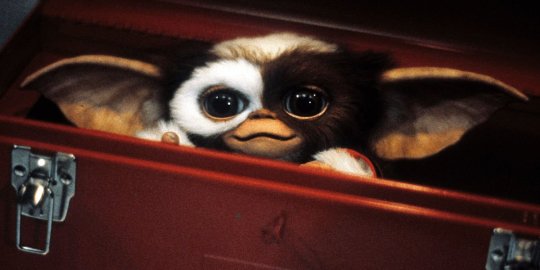
For audiences used to a faster pace, the plot may not prove engaging enough. It's also predictable; the Gremlins are brought into the Peltzer's home, Billy does everything the old man at the oddities shop told him not to do, and then he has to save his town from their shenanigans.
Billy's entire life is also incredibly mundane and predictable, from being given juice by his Susie Homemaker-type mother who stays at home baking cookies all day, to him trying to "support his entire family" on his bank job and drawing comic books.
2 The Bar Scene

While the Gremlins are out terrorizing Kingston Falls, the eventually wind up at the local bar where Kate works (presumably the only one in town). They proceed to break everything in sight, drink everything in sight, and one Gremlin is seen smoking several cigarettes at once.
What was no doubt supposed to seem like real "bad" stuff to kids of the 80s seems pretty tame now. Maybe the only no-no would be smoking indoors? You could actually do that in bars of that era. The whole idea that this scene was considered crass makes it more comical now.
RELATED: 10 Best Christmas Horror Movies
1 Chinese Stereotypes
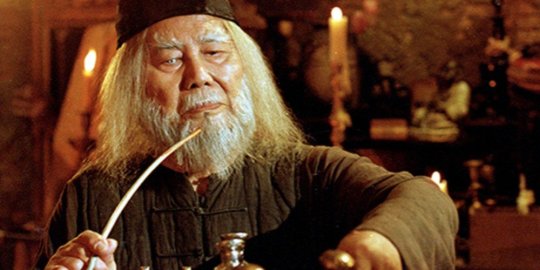
When first we meet Rand Peltzer, he's being taken to an oddities shop by a young boy, the grandson of the owner, in fact. He looks suspiciously like Short Round from Indiana Jones and the Temple of Doom, and you half expected him to say, "Okie Dokie, Doctor Jones".
But the stereotypes are all confined to the store and the zen-like kernels of wisdom dispensed by the old Chinese man who owns it. He wears a long robe, a round hat, a long wispy beard, and says things like, "With Mogwai comes great responsibility".
NEXT: 10 Things From Goonies That Haven't Aged Well
source https://screenrant.com/gremlins-movie-aged/
0 notes
Text
Kin (2018)
Some movies attract viewers by being part of certain franchises or studios. Others have a well-known director at the helm. And then there are concept films, in which moviegoers come to see an interesting movie idea unfold onscreen.
Over the past few years, theaters have featured Downsizing, Game Night, Baby Driver, Loving Vincent, Swiss Army Man, Nerve, Happy Death Day and more movies of assorted quality, in which the main attraction is how a certain gimmick or quirk — including human miniaturization, frame-by-frame painting animation and a Groundhog Day horror movie — will play out.
Kin, the debut feature for brothers Jonathan and Josh Baker, is a film that is fractured by its unwillingness to use its concept: an average boy finding a laser gun.
The Bakers’ film is based on their short film, “Bag Man,” which premiered at South by Southwest, or SXSW, in 2015. In Kin, as in “Bag Man,” a boy carries around a duffel bag hiding a laser gun. In both iterations the story surrounding the laser gun’s usage is mundane, serving as a way to elevate the alien nature of the weapon and wow factor of its execution. In both films, there is a lot more mundanity than there is wow factor.
Kin star Myles Truitt also makes his feature film debut as the character Eli Solinski. Eli stumbles across the laser gun and the remnants of a futuristic-looking battle in an abandoned building. Dennis Quaid plays the role of Eli’s father, Hal, stern and moralizing to a fault. When Eli’s brother Jimmy returns home from prison, the family is thrown into turmoil as Jimmy’s criminal past comes back to haunt him.
Jimmy takes Eli on the run, heading to a family cabin in Lake Tahoe with the laser gun hidden in Eli’s duffel bag and a number of pursuers on their trail.
The draw for Kin is the duffel bag, hiding a mysterious object with untold capabilities. The gun is shown on two occasions in the abandoned building, and as Eli pulls it out at home and mimes firing and as it is carried from place to place before it is actually fired.
There’s a lot of waiting, and the film suffers as a result. For all the mundane elements of Kin, there is a hint of something better, something loftier and more visceral lurking throughout the movie. A score by Scottish band Mogwai creates a sense of both trepidation and anticipation, echoing the far-superior film Annihilation, which Kin could have been, but can’t seem to achieve.
As for its sections of mundanity, Kin is perfectly fine. Jimmy and Eli have a relationship marred by years of separation and mutual feelings of resentment and loneliness; Jimmy’s a jailbird and Eli’s adopted. There are moments where their brotherhood is deeply apparent, such as when teenage Eli drives donuts in his dad’s truck around Jimmy, the two full of glee and brotherly compassion.
Jimmy is played by Jack Reynor, who seems to have a knack for playing big brothers, having played a similar role in the acclaimed 2016 movie Sing Street.
There’s something missing in their connection, however, as a result of a poorly constructed lie early on in the film that haunts the rest of the story.
James Franco haunts Kin as well, playing Taylor Balik, a vengeful criminal out for Jimmy’s blood. Franco has a grab-bag of quirks and flavor in his performance — at times a bit much — but otherwise gives the audience something entertaining to hang on to. Taylor says, “Mondays, right?” before a murder at a gas station, a far cry from the menace of a similar scene in No Country for Old Men. Still, he’s a serviceable villain, who roars powerfully toward his prey.
Kin is not a bad movie, but it is a member of that insidious category of could-have-beens. One wonders how well the film would have turned out with a more robust expression of its sci-fi elements, or even without them, paring itself down to a family tragedy and road movie instead.
The cocky older brother and the shy younger one don’t need a laser gun to propel them away from a dangerous criminal and an interesting story. The story especially doesn’t need its ending, which is at best a sequel-tease and at worst an unearned, out-of-nowhere plot explanation that acts as an excuse to give the executive producer a significant role in the story.
Kin’s predicament recalls an idea from the Calvin and Hobbes comics: the noodle incident. Every now and then, somebody would mention the worst thing that the troublesome Calvin had gotten up to, something so bad it could never be described.
In the comics, there was never an explanation for what this incident was; it was left up to the imaginations of readers. The potential of the unnamed act almost always beats actuality.
The fatal flaw of many movies is their inability to live up to their concepts and inherent potential. It is this potential that harms Kin, because the more an idea is anticipated and built up, the less likely it will be for the explanation to satisfy.
Originally published in Baruch’s The Ticker
0 notes
Text
New Japan Pro Wrestling Finally Comes to America
When Zach Sabre Jr. draped his body across Tomohiro Ishii's back and wrenched Ishii's arms into a horrifying, unnatural angle, the crowd gasped and shouted and brayed. The crowd believed in what they saw.
Ishii, a bald, loveable bruiser who looks like a cross between a baby hastily woken from his nap and a cinderblock, was nominally the face. Sabre Jr., a rail-thin Brit who prefers traditional, excruciating arm locks and has a finisher named for a Mogwai song, was the heel.
This semifinal match in the inaugural tournament for New Japan Pro Wrestling's U.S. Championship needed neither storylines nor promos. The moment needed only the audience's pent-up desire to actually see it—to witness many of these wrestlers fight, sweat, and struggle in person for the first time.
Ishii and Sabre Jr. fought in a semifinal for the inaugural US Championship. Photo by Evan McGarvey
The scene outside the convention center in Long Beach before the start of the second and final night of New Japan's first weekend on American soil was a study in contrast. Hundreds of wrestling die-hards in "Bullet Club" T-shirts walked in clusters, chatting about Kazuchika Okada in the previous night's main event, while roughly the same number of Jehovah's Witnesses—dressed-up families, grannies and aunties being helped into wheelchairs by teens—filed out of the assembly hall next to the one we piled into.
Inside, the hall rippled with a cultish energy. Which made sense. Major WWE events swallow metro areas for days at a time. True independent wrestling shows light up old VFW halls and come and go with barely a whisper beyond their Facebook pages. New Japan promised something different.
Since the 1970s, when Antonio Inoki founded it, New Japan and the style of wrestling it evangelized—wrestling as combat sport, not carnival act—has served as a reference point for the wrestling cognoscenti. Fans used to barter VHS tapes for glimpses of Tiger Mask, Masahiro Chono, and a young Owen Hart. NJPW was a viewing experience that one earned.
Years later, the standard "main event" style in American wrestling would be impossible to imagine without NJPW and Japanese wrestling. Big men fly, everyone can hook in at least one vicious hold, and each suplex snaps more satisfyingly than the last. The stars of today either grew up as fans of Japanese wresting or came to the U.S. fresh from NJPW, like WWE's A.J. Styles and Shinsuke Nakamura.
Sunday night didn't ripple with the expected amount of controlled violence. Many wrestlers seemed content to stick to signature high spots and mug for a crowd that was just happy to be there. But the night did have moments that felt like the Japanese wrestling championed on message boards and on DailyMotion. Ten rows away, Ishii's strikes echoed like rifle kickback. Tetsuya Naito's dropkick swung into his opponent like an ice pick.
As a fan named Gerardo Ortiz put it, "This is more of a competitive program. It feels like a combat sport where WWE feels like theater."
The merch line was not short. Photo by Evan McGarvey
For those who had only seen NJPW through its New Japan World streaming service, which launched in 2014, this weekend of live events, branded as the G1 Special in USA, was a long-awaited chance to revel in something they loved.
"This is great, but I don't know if my judgment is clouded by being here live," said Kyle Kensing, another fan at the event. "I used to go to punk shows in college and the independent wrestling scene reminds me of it."
His friend Adam Marantz, who traveled to the show from Illinois, echoed Kensing's sentiment:
"This is like Comic-Con. It's like a pilgrimage. It's cool, you meet strangers and then you're all having lunch together, talking about wrestling."
The night had the vibe of a convention or a reunion. Everyone sat in folding chairs on the same level, no bleachers or risers to be found. The merchandise table was swamped, the queue doubling back on itself and filling half the floor space at the back of the hall. A Japanese detergent company offering NJPW trading cards with every purchase set up shop next to the concession stand. When legendary announcer Jim Ross—the fired-up Old Testament voice of WWE's Attitude Era, now announcing NJPW's U.S. shows—passed a cluster of fans during the intermission, they cheered with the unalloyed happiness one might have greeting a favorite uncle.
The show itself displayed the quirks of NJPW and Japanese wrestling in general. NJPW deploys six-, eight-, and ten-man tag team matches—breathless, hard-to-follow action free of storyline or consequence—to keep the crowd happy in between the major bouts. Nearly every wrestler belongs to a stable, from the Los Ingobernables de Japon, a group of Japanese wrestlers who blend Lucha Libre names and costumes with a Death Note-style Nihilism, to the Bullet Club, one of the hottest acts in wrestling at large, a group of mostly Anglophone wrestlers who do villainous things with a distinctly American bent (talk trash during matches, cut promos before and after matches, ham for the camera).
There were no bleachers or risers, just folding chairs at floor level. Photo by Evan McGarvey
The Bullet Club's leader, Kenny Omega, wears Nintendo-themed T-shirts and blends athleticism with a hammy, meta-wrestling practice that is light years removed from his days as a WWE developmental washout. His compatriots, the Young Bucks, entertained the crowd with in-match in-jokes and fourth-wall-breaking hijinks. They have a finishing move named for the Dave Meltzer, the preeminent wrestling journalist and critic, and made sure to gratify the fans with an especially outrageous permutation during their match Sunday. Though heels in Japan, the majority of the Bullet Club wrestlers were cheered rapturously in Long Beach.
Omega won the first-ever U.S. Championship, beating Ishii in the outstanding main event. Afterward, he cut a strangely heroic promo about how everyone in the ring—the Bullet Club—and the fans in attendance were special, had fought against those who hadn't believed in them, and would lead New Japan into the future. The crowd loved it.
The immediate future for NJPW, however, is back across the Pacific. The converted fans in Long Beach got a taste of their internet heroes live. Whether the appetites of new fans were whetted remains to be seen. And after a moment of triumph and camaraderie, American fans new and old are back to watching New Japan on their computers via tape delay, their living, breathing, sweating, cult-favorite wrestlers sliding back behind the screen.
New Japan Pro Wrestling Finally Comes to America published first on http://ift.tt/2pLTmlv
0 notes